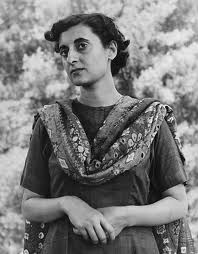
No one ever knew what happened, not really. Trish Fenellosa’s mother came home from work one evening to find that someone, going by the looks of it, had ritually slaughtered an animal in her kitchen. Blood was smeared on the walls, red rivers ran on the floor. An old carving knife, dripping with life juice, was sitting by itself on the dining table.
A trail of hemoglobin was leading to the rear of the house. The woman followed it, saw the blood covering the pale neck of the hallway, the off-white torso of the bedroom belonging to her oldest daughter, Katie. There was violence in every corner of the room. Someone had been stabbed here, and every wound had been deep.
Noise was coming from down the hall, from behind the closed bedroom door of her youngest daughter, Trish. Incongruous noise: Music. TV. Pressure pounding, hands trembling, still carrying her four-serving order of Chick-Fil-A take-out, the woman moved to the room and opened the door.
Trish was sitting at her desk, calmly working, despite her blood-stained clothes, on a term paper. The teen turned to look at her mother, face eerily blank, showing no emotion.
“Are you looking for Katie?” she said.
>>>
Within hours everyone in northern California’s Lake County was looking for Kate Fenellosa, 17. Or for her body. Based on the massive blood loss found at the scene, police thought it was unlikely—some said impossible—for the girl to have survived. Local hospitals were checked. Fields and woods were searched with dogs. Clear Lake was dredged. Detectives flooded the panicked community of Whispering Valley, looking for eyewitnesses. All in vain. Katie’s body would never be found.
The responding officers questioned Trish, 15, as soon as they arrived at the Fenellosa home. Her answers, according to transcripts entered as evidence in the trial, were halting, evasive and nothing short of strange.
Off. Cuellar: Can you tell us where your sister is?
Trish Fenellosa: My sister…my sister’s gone.
Off. Cuellar: Gone? Gone where?
Trish Fenellosa: She…took off. She just took off. She went away.
Off. Cuellar: She went away. Do you know where she went away to?
Trish Fenellosa: I don’t know… Maybe down to the city [meaning San Francisco]. Or LA. Maybe she left the country, I don’t know… She’s just gone.
It was obvious that Katie, what was left of her, had been taken somewhere. Trace evidence showed a blood trail leading out of the kitchen and abruptly stopping at the driveway, suggesting that the girl’s body had been wrapped in a blanket and dragged into a car. But how did her younger sister manage to get hold of a vehicle, stuff the corpse inside, then dump the remains somewhere and ditch the car? She had to have had help. Unfortunately, interviews with her school friends turned up no likely candidates. That was a problem.
On the other hand, there was the carving knife. A working woman, Trish’s mother rarely had time to cook and couldn’t remember ever using the knife. Which explained why the only prints on the handle belonged to Trish. As for the blood on the blade, yes, it was Katie’s. DNA tested, all the blood in the house was Katie’s.
Two days after the incident, Trish was brought to police headquarters in Lakeport, the county seat, for formal questioning. Her story kept changing as the interrogation went on. First she said she was in her room with the door closed, listening to music, the TV, and never heard a thing. Then she suddenly remembered hearing noises in the house at one point, footsteps. Heavy footsteps, like a man’s. She heard a double rapping, like someone knocking on a door, then the footsteps went away.
Det. Han: You heard this over the music? You could hear the footsteps?
Trish Fenellosa: They were LOUD.
Det. Han: Did you get up and look? See what it was?
Trish Fenellosa: No.
Det. Han: Why not?
Trish Fenellosa: I didn’t CARE.
Det. Han: So you heard steps, but you didn’t look.
Trish Fenellosa: No. I had work to do.
Det. Han: So how did you get blood all over your clothes?
Trish Fenellosa: The blood was there when I got home. I slipped in it and fell.
Det. Han: You fell.
Trish Fenellosa: Yes.
Det. Han: In the blood.
Trish Fenellosa: Yes.
Det. Han: So you come home, you see all this blood, you go and work on your TERM paper?
Trish Fenellosa: It’s one-FIFTH of my grade.
That was the last thing she ever said to the police. From that moment on she slipped into a cocky and defiant silence that was never broken. Through all the subsequent interviews, through all the proceedings that followed, she never said a word. She never admitted any involvement in her sister’s disappearance/death. She never denied any involvement either. She never even said that she missed her sister, that she was sorry Katie was gone.
You know how 15-year-old girls can be? Surly, hyper-confident, full of themselves? Treating everything like it was one huge joke? That’s what Trish Fenellosa was like, only she maintained the attitude even while being questioned, even while being taken into court in handcuffs and arrested for murder as news cameras from around the state glared in her mocking and sneering face.
Her defenders said she was clearly traumatized, shocked into silence. She was just a kid who had no true comprehension of what was happening to her. The Lake County DA felt otherwise. In private, it later came out, he referred to her as that snotty little shit, and he believed guilt was bubbling inside her like black liquid in a primeval tar pit.
But why would she kill her sister? What was the motive? Investigators tried to find one. Talking to her family’s Whispering Valley neighbors, they heard rumors about sexual abuse by the girls’ stepfather. They attempted to work up a theory of sexual jealousy, the sisters fighting for the stepfather’s attention, but with no supporting evidence nothing ever came of it.
Then again, maybe motive wasn’t needed. Besides her prints on the knife, Trish’s behavior seemed to supply the strongest evidence against her. In her bedroom investigators found a notebook filled with drawings of a girl’s bloodied body in a field. The size, age and hair of the sketched victim bore a decent resemblance to Katie. One of the drawings was captioned, Just Lay Down & Die.
The notebook was entered into evidence. So was the testimony of one of the matrons at the Lake County Correctional Facility, who said Trish told her she wanted to be a surgeon when she grew up. Why? They’re allowed to stick knives and needles into people. I like that. I like hurting people.
 I’m happy to tell you my new book is now available at Amazon and/or the Kindle store, the iPad’s iBooks store, Barnes & Noble, Smashwords, Sony, Kobo and Diesel. (The major online links are below. For the iPad, of course, simply tap on your iBooks app.)
I’m happy to tell you my new book is now available at Amazon and/or the Kindle store, the iPad’s iBooks store, Barnes & Noble, Smashwords, Sony, Kobo and Diesel. (The major online links are below. For the iPad, of course, simply tap on your iBooks app.)






